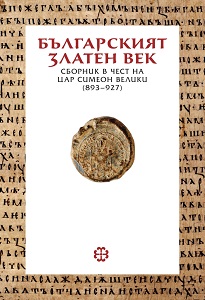
We kindly inform you that, as long as the subject affiliation of our 300.000+ articles is in progress, you might get unsufficient or no results on your third level or second level search. In this case, please broaden your search criteria.







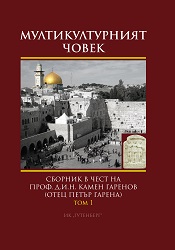
Several early Christian basilicas have been discovered in the region of Karlovo up to now: down the route to the Roman road Oescus-Philipopol at the Roman station Soubradice and the ancient settlement nearby the village of Hristo Danovo, on the lands of the ancient settlement nearby the village of Hristo Danovo, on the lands of the village of Voynyagovo, in the monastery complex of the Medieval stronghold Kopsis nearby the village Anevo. Another Christian church is located down the route of the Balkan Roman road from Serdica to the Black Sea on the lands of the village Iganovo nearby the late ancient settlement. On the lands of the village of Vasil Levski in a late ancient settlement an early Christian basilica - the only one in the region with baptistery and synthronon - has been studied. Religious building found had played a great role for Christianization of the local population, whereas it is suggested to be the Yoanica episcopate during VII-IX century
More...
Northern Bulgarian Black Sea coast was colonized by the ancient Greeks who created the colonies Odessos (Varna), Dionisopolis (Balchik), Bison (Kavarna) was Tirizis-Acre (Kaliakra). Following the imposition of Roman power in these lands here were disseminated the official Roman cults, and later - Christianity. In Late Antiquity (IV-VI c.) Christianity became the official religion and with agreements of the central government were created Episcopal centers. Despite the lack of written sources it could be assumed that these cities were becoming Episcopal centers in the province Secon Mizia.
More...
The present preliminary report concerns two churches (Nos 1 and 2) dating from the Middle Ages and located in the Hissarya locality by Dragoinovo village in the region of Purvomai. They are single-naved, single-apse churches with narthexes and entrances from the west. Church № 1 is part of a larger complex including another two Christian churches dated from the second half of the 10-th or the 11-th century, while church № 2 is dated from the 12-th - 13-th century.
More...
The article follows the issue of the spiritual outlook of Europe in the context on the continental literary traditions, the role of the saintly brothers Cyril and Methodius and their disciples, of Prince Boris and Tsar Simeon, coming to the conclusion that, if we try to ask ourselves what is Europe today, what defines it most precisely is Graeco-Roman Antiquity, Christian culture and the three main alphabets - Latin, Greek and Cyrillic - by means of which our Old World has carried its heritage and memory through the centuries.
More...
This study summarises the author's way of finding the initial contents of the famous translated anthology of homilies by and excerpts from John Chrysostom. It was compiled by educated Bulgarian ruler, Tsar Simeon the Great (893-927) and was translated in the 9th century, after 893. The exceedingly apt title of 'Zlatostruj' (literary 'Golden Stream') is a symbolic expression of the blessed word of Chrysostom and the book surely has the objective to transform the unenlightened Bulgarian people by means of persuasion, not by force, as it was until 893. The initial translation features 45 homilies. This thesis is confirmed by two Vilnius copies of the 'Zlatostruj' from the Monastery of the Annunciation in Suprasl, currently located at the library of the Wroblewski Library of the Lithuanian Academy of Sciences in Vilnius, Lithuania.
More...
This paper discusses the Afterword of 907 added by Preslav monk Tudor Doks to the Four Orations against the Arians of St. Athanasius of Alexandria translated by Bishop Constantine and copied by him. The orations were translated and copied by order of Prince Simeon, who was probably a relative of the monastic writer. Tudor's Afterword, rich in cultural and historical evidence, is analysed in the discourse of the short Byzantine chronicles and Old Bulgarian epigraphic sources, the Nominalia of the Bulgarian Khans and the afterwords to the 10th century works from Preslav. It is concluded that Tudor's Afterword is a sort of chronicle of the creative works of the family of the princes Boris-Michael and Simeon which ruled Bulgaria. It is assume that the Afterword is written in the so-called family monastery of the rulers from Preslav, located in the direct proximity to the Round (Golden) Church.
More...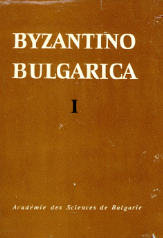
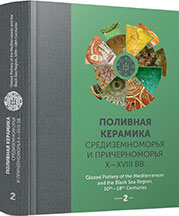
This study consists of initial observations made upon Byzantine, Seljuk, Begliks and Ottoman pottery finds from the Aphrodisias excavations since 2013. Chronology of the pottery finds uncovered in the North Avenue, South Agora, Hadrianic Baths, Theatre and Temple of Aphrodite will be presented briefly. To resolve the contexts in which the potteries belong to, the emphasis is on the history of the city and political events that could have potentially caused considerable changes to the economy. By establishing analogies and considering the chronology of the city, an attempt is made herein to put the pottery finds into their possible contexts.Through the end of the 9th century in Aphrodisias, a sudden rise in the quantity of Byzantine potteries is observed. The city was in commercially connected to Constantinople and centers such as the Adriatic Coasts or Corinth. Pieces of Fine Sgrafitto Ware, Green and Brown Painted Ware and Slip Painted Ware produced from the middle of the 12th century and the beginning of the 13th century have been found in many areas of the city. Very few pottery finds belonging to the Seljuk period have been uncovered. In Aphrodisias, glazed pottery production probably started during the Byzantine or Begliks period.There was a period of growth in Aphrodisias from the first quarter of 15th century to the mid 16th century. In excavated areas, a large number of pottery finds have been found. With the change of commercial routes in the 17th century, the city was increasingly reduced into a rural settlement and has subsisted to the present day.
More...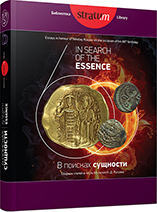
The article deals with the most popular among the warriors offensive melee facilities weapons, especially swords, medieval sabres, falchions and their components found in the northern part of the Dniester-Prut interfluvial area.The territory of the Northern Bukovina knows 11 swords. The above analysis of blade weapons made it possible to distinguish among them some types of XIIa, XVIа, XVII, and XX according to E. Okshott, dating to 14th—16th centuries. The proposed typology is not exhaustive and definitive, and perhaps further research and new finds will be able to clarify it more.The fragments of the sabre, as well as the saber guards, were found on the studied area. The latter refers to types I, II according to A. Kirpichnikov. The guards are dated by the analogies of the 11th—13th centuries. Among the weapons found in the investigated territory, there are also known two falchions, of cross-guard shape and pommel shape. The falchions are type 1 and 2 according to A. Nadolsky. They are dated by the middle of the 15th — the beginning of the 16th centuries.Thus, it is obvious that the local population from the investigated territory was quite sufficiently armed. Evolution of these weapons was mainstreamed with the general development of the military art in Europe. The territory of the Northern Bukovina in the 12th—16th century was involved into the pan-European political events. And the finds of the advanced weapons of that time serves as evidences to the fact.
More...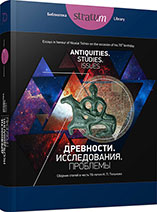
The article is devoted to revealing regularities of formation of the Russian-nomadic frontier in the Middle Don region based on the analysis of the geographical location of the archaeological sites of the 9th—17th cc. The sites of Slavic Borshevskaya culture (the end of the I Millennium AD) are located in the lower reaches of the Voronezh river and on the right Bank of the Middle Don (Central Russian upland). The sites of the Saltov culture are located on the right bank of the Middle Don, to the North of the Tikhaya Sosna river. The left bank of the Middle Don (the Oka-Don plain, Kalacska hill) was not an area of active colonization by the bearers of the Borshevskaya and Saltov cultures.In 12th — first half 13th centurie, the Russian population is documented in the lower reaches of the Voronezh river, Semiluki area reaches of the Don. Polovtsian nomads used to camp on the right bank of the Middle Don and do not spread beyond the South of the Tikhaya Sosna river and on the left bank of the Middle Don to the Bityug river.In the Golden Horde period, the Russian population colonized the left bank of the Middle Don. There is archaeological evidence of the coexistence of different ethnic groups. Nomadic sites do not extend to the North of the Tikhaya Sosna river, on the right bank of the Don river, and the mouth of the Voronezh river, on the left bank.Belgorod defensive line reproduces the line formed by the fortified settlements of Slavic Borshevskaya cultures on the rivers Don and Voronezh, and fortified settlements of the Saltov-Mayaki culture on the Tikhaya Sosna river. The left bank of the Middle Don in the 17th century, just like in the time before that, was still the region of the original colonization by the Russian population.
More...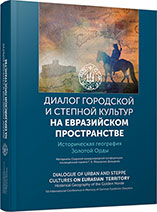
The city of Bolgar situated 50 km south from the Kama river mouth occupied an advantageous geographical position. Starting from 10th century, the territory, which had been closely connected with Bolgar throughout the entire period of its existence up to the early 15th c., began to develop around the city. This territory occupied both the left and the right bank of the Volga. After the Mongol invasion, the number of settlements in the area considerably reduced. The remaining ones, closely connected with Bolgar, gained further development and actively participated in the commodity-money relations of the Golden Horde Bulgar ulus.
More...
The author discusses features of the Middle Volga region historical development in the second half of the 14th to first half of 15th c., in the Golden Horde decline period. The specificity of the three climatic zones of the Middle Volga region, which determined the economic structure and the originality of the population’s material culture, is taken into account. Following the economic boom and the growing number of urban and rural settlements in the first half of the 14th century, a decline and urban life degradation are traced later, as well as the population migration to the north due to military conflicts and climatic changes. On the other hand, new settlements, cities included, emerged in the Middle Volga in the late 14th to first half of the 15th century as a result of the influx of the Golden Horde servicemen, the Volga Finns and the Russians. In the first half of the 15th century, independent Tatar fiefdoms, or beilyaks are established here, and simultaneously prerequisites for the emergence of independent states — Kasimov and Kazan Khanates — are formed.
More...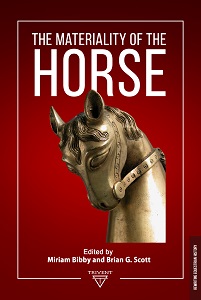
Ireland has nearly one hundred and seventy examples of cheek-pieces, two examples dating from the Later Bronze Age, the rest from c. sixth to seventeenth centuries AD, the great majority of which are of insular design and manufacture. There is a highly distinctive class that has been categorised as “horse pattern,” by far the greatest number being in the collections of the National Museum of Ireland, It is clear, however, from the basic anatomical details depicted that the animal incorporated into the design is a male deer, a red deer stag or a fallow deer buck. It is a distinct group, but one without immediate parallels, datable provenances or associations, and it is very difficult to find any convincing precursor inside or outside Ireland, or to use stylistic features to provide a reasonably close date-range. Metal analysis would tend to indicate later rather earlier mediaeval, a view that might be supported by ceramic motif parallels and, by the dating of the introduction of fallow deer to Ireland at the start of the thirteenth century AD.
More...